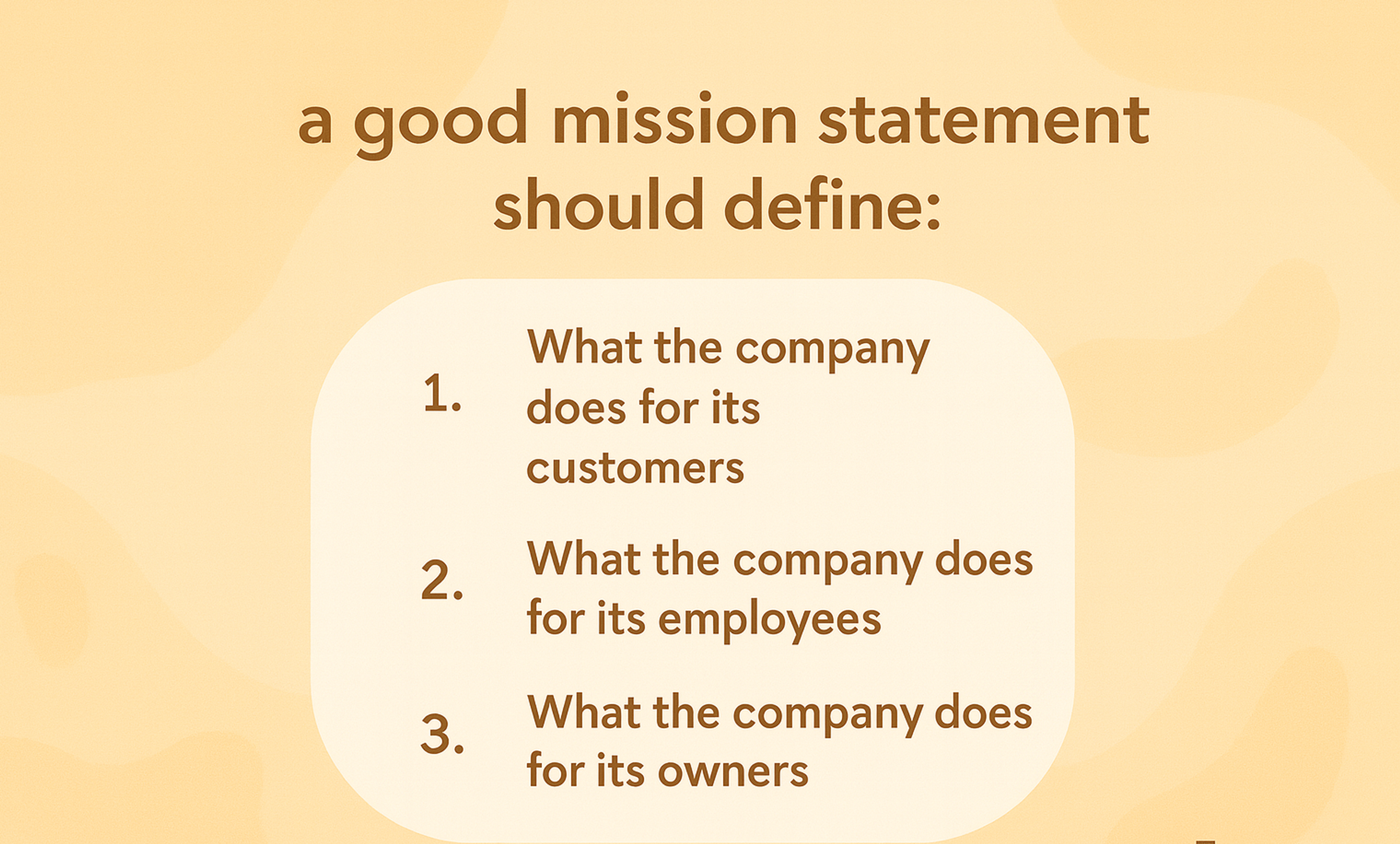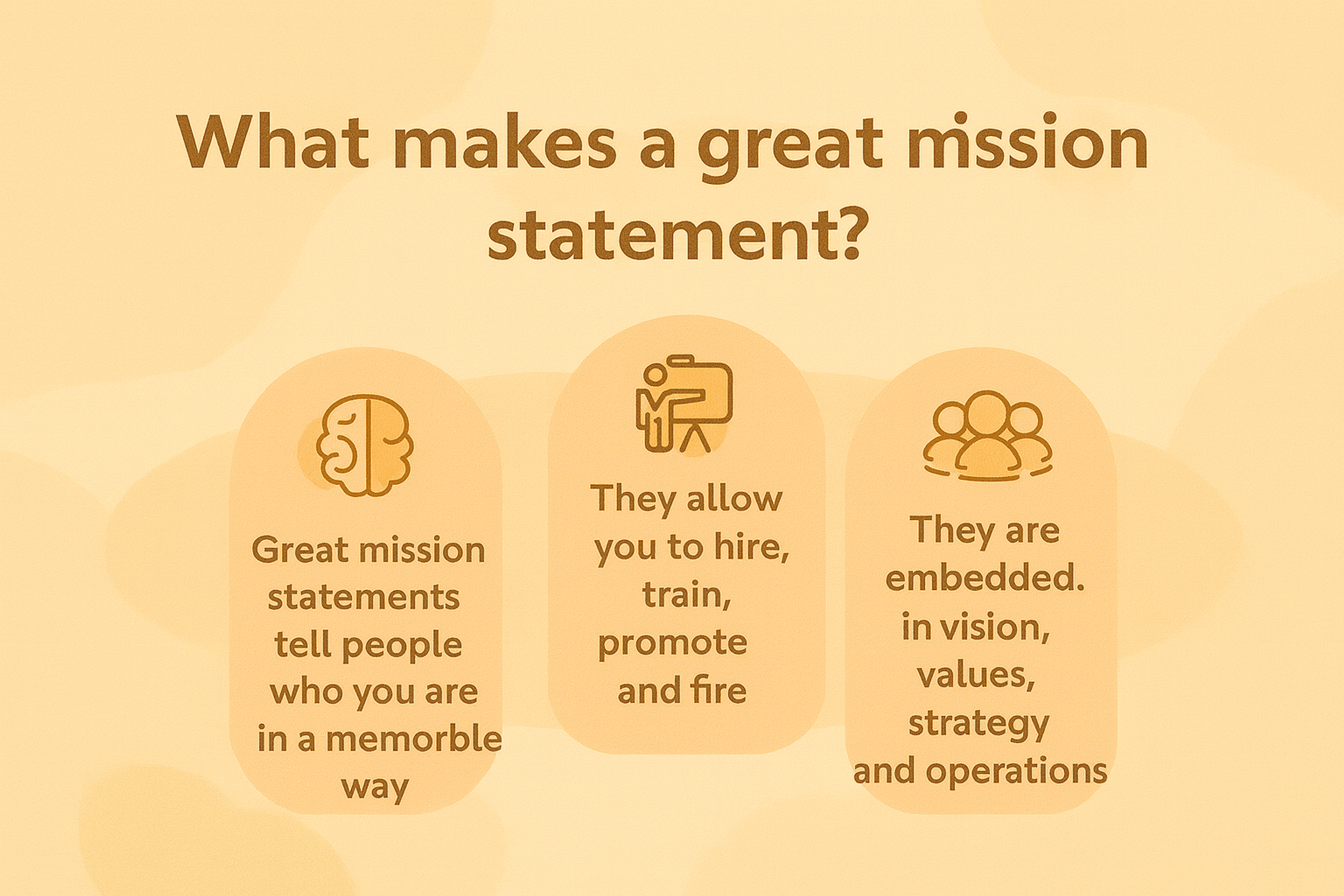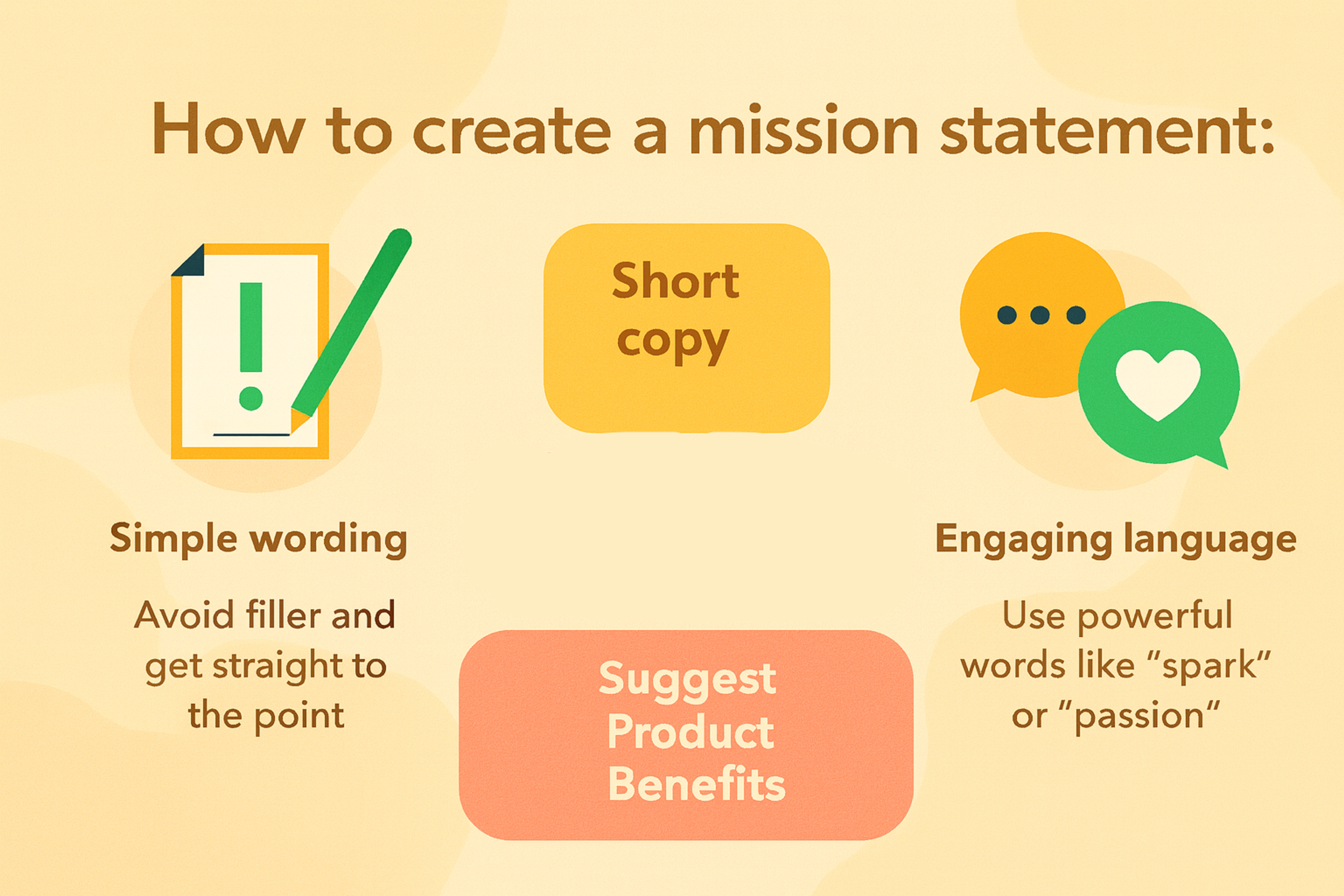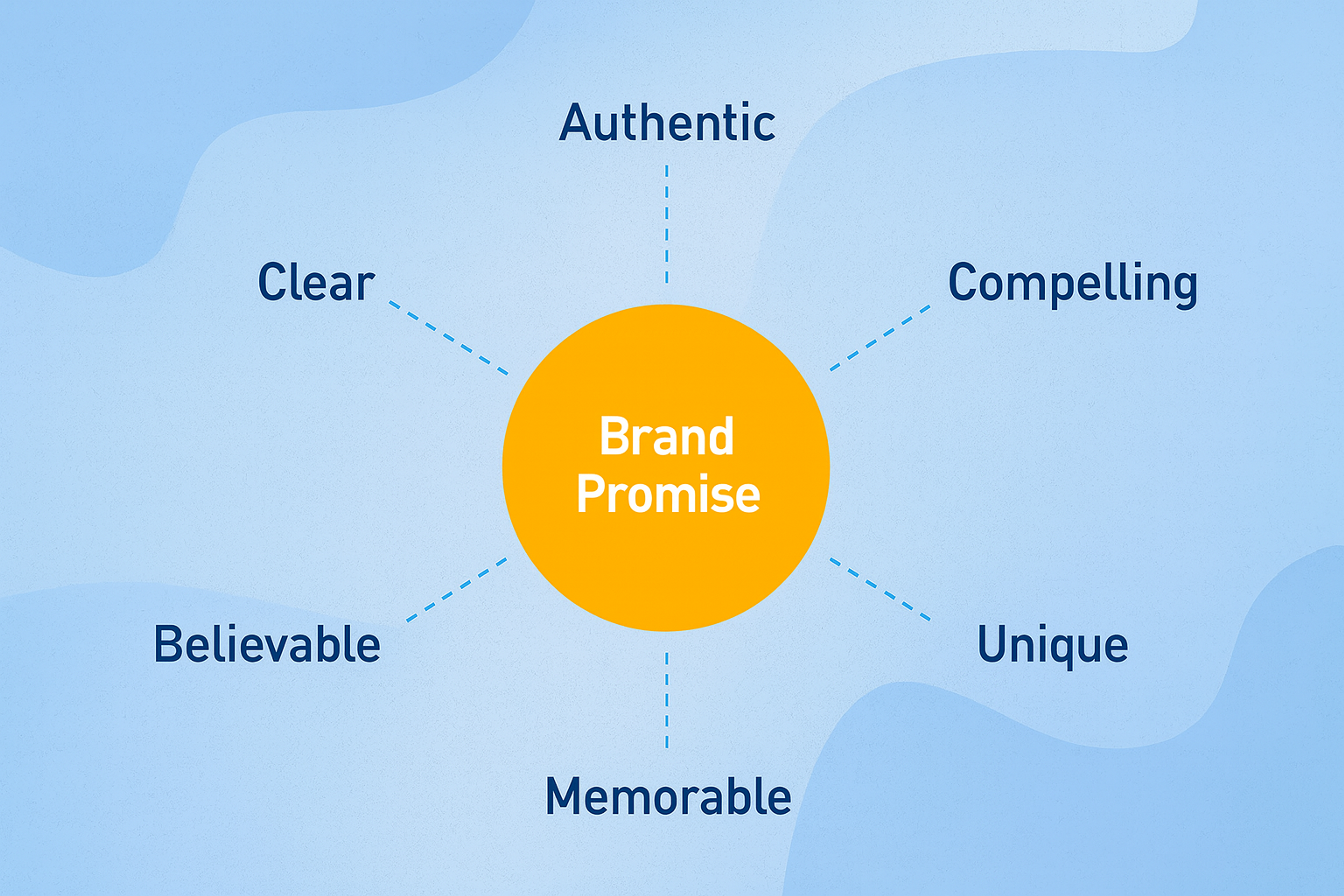A mission statement is more than a slogan. It connects leadership vision with daily work. It guides choices. It shapes culture. It tells customers and partners what you stand for. When you design it well, it becomes a tool for change. It rallies teams. It improves the experience for users. It builds lasting advantage.
A strong mission explains why you exist and how you create value. It states what you aim to achieve and what you refuse to trade away. It helps people see their role in the larger story. It also keeps strategy honest. A clear mission stops drift and noise. It turns growth into direction, not speed for its own sake.
Mission Statement

Mission vs. Vision
A vision looks ahead. It describes the future you want to build. It is your north star. It inspires long-term effort.
A mission lives in the present. It explains who you are and how you deliver value now. It links values, goals, and behavior. It guides design, service, and decisions. Vision says where you are going. Mission says how you will move today to get there. You need both. Vision gives aim. Mission gives action.
Why Mission Matters for Product and UX
Product work is a chain of choices. Without a mission, choices compete and collide. With a mission, choices align. Designers can defend clear paths for users. Product teams can choose fewer, better bets. Support and sales can promise the same outcomes. Users feel the result. Paths become simple. Messages stay consistent. Trust grows.
What Makes a Mission Actually Work
Clarity comes first. Use simple words. Cut jargon. Keep the core in one or two sentences. Short lines are easier to share. They also force focus.
Make it memorable. People carry stories, not decks. Use language that shows intent and impact. Avoid vague claims that fit any company.
Show what makes you different. Point to the value only you can create. If your mission could sit on a rival’s site, it is not done.
Make it useful. A mission should help teams choose. If it cannot resolve a real trade-off, it is not yet practical.
Keep it timeless yet flexible. Tie it to value and principles, not to a current product or channel. Markets shift. Your core promise should endure.
Respect stakeholders. Speak to customers, employees, partners, and the community. Show how your work supports each group. Do not please everyone. Do show you understand who matters and why.
What Makes a Great Mission Statement

Mission as an Organizational Framework
Treat mission as a frame for big decisions. Use it to judge new markets, product lines, and bets. When teams know the frame, they can act with autonomy. Alignment rises. Micromanagement drops.
Culture grows from what you reward and allow. Mission shapes the rules of the game. It signals how you work, how you hire, and how you lead. It tells people which goals outrank others. It becomes the standard for quality, speed, and care.
A distinct mission also strengthens your brand. It invites people who share your values. It keeps promises realistic. It ties stories to real behavior.
From Idea to Action
Leaders start with vision. They sketch a hopeful future and the impact they seek. They then translate that vision into a mission people can use. They show the mission in choices, not only in words. They connect each major decision to the mission in public. They repeat the message in planning, reviews, and recognition.
Authenticity matters. People follow what leaders do. If you ask teams to trade short-term wins for long-term trust, model it yourself. If you ask for user focus, spend time with users. If you ask for clarity, write clear notes and plans.
Repetition matters too. Mission is not a campaign. It is a rhythm. Keep it visible in 1:1s, team goals, hiring rubrics, and promotions. Over time, the mission becomes habit.
Building the Mission Together
A mission works best when people build it together. Start with research. Talk to customers and employees. Ask what value they get and where you fall short. Map the needs of partners and the community. Look for the threads that unite the stories.
Bring diverse groups into the room. Product, design, engineering, support, sales, finance, and HR all see different risks and chances. Cross-functional workshops help you find simple words that many can own.
Draft several short versions. Test them with small groups. Ask three questions. Is it clear? Is it unique? Does it help you decide between A and B? Keep what passes all three tests. Cut the rest.
Launch with care. Explain why you chose this path. Share examples of how the mission changes choices. Train managers to coach with the mission in mind. Update handbooks, onboarding, and review forms.
Schedule regular reviews. Markets change. People change. Keep the core stable, but refine language and examples. Treat the mission as a living rule, not a fixed plaque.
How to Create a Mission Statement

Turning Mission into Strategy and Daily Work
Let mission shape plans. Set goals that reflect the value you promise. Tie roadmaps to those goals. When a new idea appears, test it against the mission before testing it against the market size.
Use a simple decision lens. When you face a trade-off, ask which option serves the mission better. The answer may slow a short-term metric. It should raise long-term trust and value.
Allocate resources accordingly. Budget, time, and talent should flow to work that advances the mission. Say no to attractive ideas that do not fit. Fewer projects often mean better results.
Measuring the Impact
Measure what the mission claims. If you promise user clarity, measure task success and support effort. If you promise access, measure reach and inclusion. If you promise care for the planet, measure real impact, not only intent.
Look across groups. Check employee engagement and retention in key roles. Check customer loyalty, satisfaction, and reasons for purchase. Check partner health and community outcomes. Track strategy health as well. Count how many initiatives link directly to the mission. Watch how often you decline misaligned work.
Use both numbers and stories. Metrics show scope and trend. Stories show meaning and edge cases. Review both on a regular cycle. Adjust plans and training where gaps appear.
Brand, Story, and Experience
Brand promises should match inner practice. If you promise speed, design for speed and support it with tools. If you promise care, give teams time to care. If you promise access, remove barriers in service and design. Brand breaks when stories and systems collide.
Tell true stories. Share decisions that show your values under pressure. Celebrate teams who chose the mission over ease. Use a consistent voice and look across channels. Help people recognize you in one glance and one line.
Brand Promise

Innovation and Evolution
Innovation should strengthen the mission. New ideas are not a goal on their own. They are tools to deliver your promise in better ways. Plan experiments with clear links to the mission. Define success in terms that reflect the value you promise.
Keep the culture safe for trials. People need room to explore. They also need clear guardrails. A shared mission supplies both. It sets the “why” and the “no.”
Let the mission evolve in expression, not essence. As markets change, adjust language and focus areas. Keep the core purpose steady. This balance gives resilience without drift.
Future-Proofing Your Mission
Scan the environment often. Watch for shifts in tech, law, culture, and competition. Note changes in user norms and needs. Ask how these shifts affect your promise and delivery.
Use scenario planning. Picture several futures. Test how your mission works in each. Identify the parts that hold and the parts that may strain. Prepare options before you need them.
Build organizational agility. Flexible teams move faster without chaos when the mission is clear. Light processes, shared rituals, and open feedback loops help you adapt and still stay true.
Stakeholders and Shared Value
Stakeholders look for proof. Customers want quality and fairness. Employees want growth and dignity. Partners want reliability. Communities want responsible impact. A good mission addresses these needs with real actions.
Show how your work helps each group. Tie goals and roadmaps to those outcomes. Report progress in plain language. Invite input. People support what they help build.
Examples of Effective Company Mission Statement Examples
Crafting an effective mission statement is crucial for defining an organization’s purpose and direction. Here are some company mission statement examples that highlight clear goals and values.
Example mission statements can serve as a guiding principle for employees and a marketing asset for the business. They emphasize the importance of crafting a mission statement that captures the essence of the company and aligns with its goals.
Mission statement examples from various businesses illustrate their purpose and unique approaches. They provide guidance on how to construct an effective mission statement by drawing inspiration from these examples, illustrating their importance in aligning company goals and values.
Tesla: To accelerate the world’s transition to sustainable energy
Tesla's mission statement is highly effective due to its clarity and forward-thinking nature. It succinctly captures the company's ambitious goal of transforming energy consumption, positioning it as a leader in sustainability and innovation. The statement is broad enough to allow for growth and adaptation as new technologies and markets develop.
Source: tesla

Google: To organize the world’s information and make it universally accessible and useful
Google’s mission statement reflects its core business strategy of organizing the world's information. It highlights universal accessibility and usefulness, which not only explains their central operation but also sets a clear direction for innovation. The statement’s simplicity and focus on impact make it a strong guiding principle.
Source: google

Patagonia: We’re in business to save our home planet
Patagonia’s mission demonstrates an unwavering commitment to environmental sustainability. The bold claim of saving the planet positions it as an industry leader in corporate responsibility, deeply resonating with environmentally conscious consumers and galvanizing dedication among employees.
Source: patagonia

FAQ
How Do I Create A Mission Statement?
Identify your purpose, audience, and core values. Keep it clear, action-oriented, and focused on what you deliver and why.
What Is An Example Of A Good Mission Statement?
Nike’s mission is “to bring inspiration and innovation to every athlete in the world.” It is short, clear, and value-driven.
What Is The Basic Structure Of A Mission Statement?
A mission statement usually includes purpose, target audience, and how the organization creates impact.
What Comes First, Vision Or Mission?
Vision comes first. It defines the long-term goal, while the mission explains how to get there.
What Should A Mission Statement Not Include?
Avoid jargon, vague promises, and long paragraphs. A mission statement should not include unrealistic claims or excessive detail.
Read more:
Conclusion
All in all, the purpose of a mission statement is to facilitate focus and direction toward an articulated aim. By incorporating principles of clarity, inspiration, and relevance to core values, organizations can create mission statements that focus on their stakeholders and ensure the achievement of strategic goals.
The participatory approach ensures all views are captured in a way that the organization's mission is all-encompassing. With the changes in the context and the goals, it is recommended that mission statements be reviewed and updated periodically to remain significant and impactful.
Such principles are helpful for organizations so that they don't develop mere statements of intent but ones that capture the organization's overall direction and its intended future orientation to its stakeholders.


About Clay
Clay is a UI/UX design & branding agency in San Francisco. We team up with startups and leading brands to create transformative digital experience. Clients: Facebook, Slack, Google, Amazon, Credit Karma, Zenefits, etc.
Learn more

About Clay
Clay is a UI/UX design & branding agency in San Francisco. We team up with startups and leading brands to create transformative digital experience. Clients: Facebook, Slack, Google, Amazon, Credit Karma, Zenefits, etc.
Learn more


